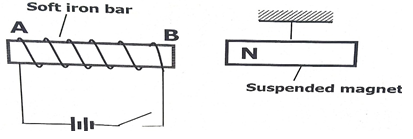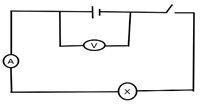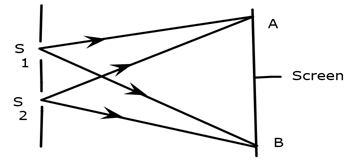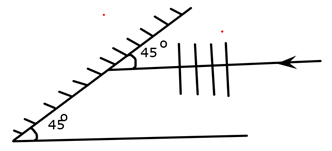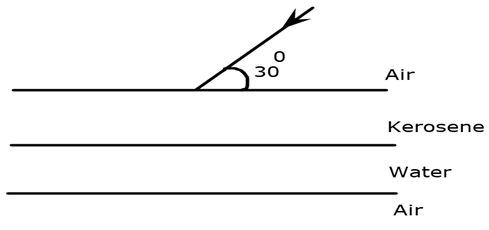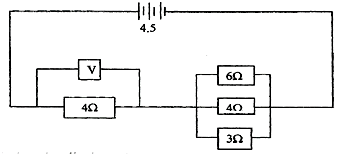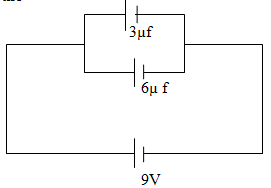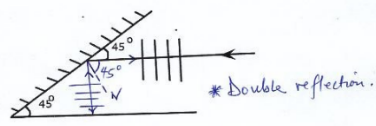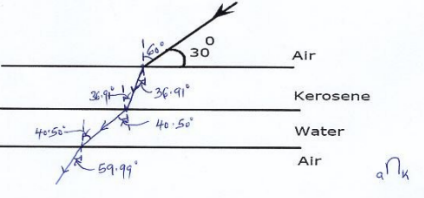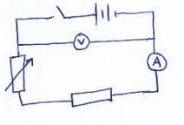SECTION I (25 MARKS)
Answer ALL the questions in this section in the spaces provided
-
- Distinguish between real and virtual Image (1mk)
- A pinhole camera forms an image of size 10cm. The object is 5m tall and 20m away from the pinhole. Find the length of the pinhole camera. (2mks)
-
- The figure 1 below shows a soft iron bar that’s placed in a coil near a free suspended magnet.
State and explain the observation made when the switch is closed. (2mks) - Give a reason why attraction in magnetism is not regarded as a reliable method of testing for polarity. (1mk)
- The figure 1 below shows a soft iron bar that’s placed in a coil near a free suspended magnet.
- The figure 2 below shows an isolated negative charge placed closer to a negatively charged plate. Draw the electric field patterns. (2mk)
- Two pins are hanging from a magnet as shown in the diagram below (figure 3)
fig 3
Explain why they do not hang vertically downwards. (2mks) -
- State the effect of pressure on the speed of sound in air. (1mk)
- A boy stands 190m from a high wall and claps his hands. If he hears an echo1.3 Seconds later, calculate the speed of sound in air. (2mks)
- State any two factors that determine the heating effect by an electric current. (2mks)
- Figure 4 below shows an object, O placed 10 cm in front of a concave mirror whose radius of curvature, C is 40 cm.
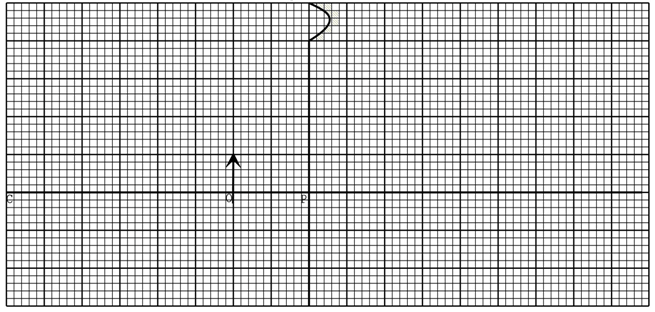
On the same figure, draw a ray diagram to show the position of the image formed. (3 mks) - State two advantages of an alkaline battery over lead acid battery. (2mks)
- An electric bulb with filament of resistance 480Ω is connected to 120 V mains supply. Determine the energy dissipated in 7 min (3 mks)
- The figure 6 below shows a cross section of a dry cell.
Figure 6
- Name the part labeled A (1 mark)\
- State the use of manganese (iv) oxide in the cell (1 mark)
SECTION II (55 marks)
-
-
- In large currents, large resistors in parallel are preferred to low resistors in series. Explain (1mk)
- State one condition under which ohm’s law is obeyed in a metal conductor. (1mk)
- A circuit constituting a battery, a metal wire, an ammeter and a switch connected in a series. The switch is closed and the ammeter reading noted. The metal wire is now heated. State observation on the ammeter reading and give a reason for your answer. (2mks)
- In the figure 7 below, the voltmeter reads 2.4V when the switch is open. When the switch is closed, the voltmeter reads 2.1V and the ammeter reads 0.15A.
Determine the- E.m.f of the cell (1mk)
- Internal resistance of the cell (3mks)
- Resistance of the bulb (2mks)
- Explain why a voltmeter of high resistance is more accurate in measuring potential difference that one of low resistance (1mk)
- Distinguish between electrical resistance and a resistor (1mk)
-
-
-
- Define the term wavelength of a longitudinal wave (1mk)
- The figure 8 below shows a displacement distance for a certain wave motion.
Determine- The amplitude of the wave (1mk)
- The wavelength of the wave (1mk)
- Given that the frequency of the wave is 40Hz, determine the:
- Periodic time (T) (1mk)
- Speed of the wave (3mks)
- Figure 9 below shows light rays from two coherent sources S1 and S2 falling on screen. Dark and bright fringes are observed between A and B
- State the function of S1 and S2 (1mk)
- State how
- Bright fringes are formed (1mk)
- Dark fringes are formed (1mk)
- Figure10 below shows plane water waves incident on a plane reflector placed at an angle to the path of the waves.
Complete the diagram to show the reflected waves (2mks)
-
-
- State Snell’s law (1mk)
- The Figure 11 below shows a ray of light travelling incident on air-kerosene interface.
- If the speed of light in kerosene is 2.08 x108 m/s, find the refractive of kerosene. (speed of light in air=3.0 x108) (2mks)
- Determine the angle of refraction in water (anw = 4/3) (4mks)
- On the same diagram sketch the path of light as it traverses through the media showing the angle of refraction in air (3mks)
-
- State Ohm’s law. (1 mark)
- You are provided with the following apparatus:
- Connecting wires
- An ammeter
- Fixed resistor
- A voltmeter
- A variable resistor
- Switch
- 2 dry cells in a cell holder
- In the spaces below, draw the circuit that can be used using the apparatus above to verify Ohm’s Law. (3 marks)
- Briefly explain how you can obtain the results to verify Ohm’s law. (4mrk)
- Study the circuit diagram below and answer the questions that follow.
- Calculate the effective resistance of the circuit. (3mrks)
- Find the voltmeter reading. (2mrks)
-
- Describe two factors that affects the strength of an electromagnet (2 mks)
- State Fleming’s left hand rule (1 mks)
- Show the magnetic field pattern around this set up (2 mks)
-
- Define the term capacitance (1 mks)
- Determine the
- Charge in 3 µF (2 mks)
- P.d across 6µF (2 mks)

MARKING SCHEME
SECTION I (25 MARKS)
Answer ALL the questions in this section in the spaces provided
-
- Distinguish between real and virtual Image (1mk)
- Real images are images that can be formed on a screen while virtual images cannot.
- A pinhole camera forms an image of size 10cm. The object is 5m tall and 20m away from the pinhole. Find the length of the pinhole camera. (2mks)
h1 = 10cm
h0 = 500cm
v =
u = 2000cm
h1 = v
h0 u
10/500 = v/2000
20000 = 500 V
500 500
V = 40cm
- Distinguish between real and virtual Image (1mk)
-
- The figure 1 below shows a soft iron bar that’s placed in a coil near a free suspended magnet.
State and explain the observation made when the switch is closed. (2mks)- The suspended magnet is repelled and pushed away. When the circuit is closed, current flow and North pole at end B is created which repels with the North pole of the suspended magnet.
- Give a reason why attraction in magnetism is not regarded as a reliable method of testing for polarity. (1mk)
- Attraction in magnetism can occur between a magnet and a magnetic material and also between unlike poles of two magnets.
- The figure 1 below shows a soft iron bar that’s placed in a coil near a free suspended magnet.
- The figure 2 below shows an isolated negative charge placed closer to a negatively charged plate. Draw the electric field patterns. (2mk)
- Two pins are hanging from a magnet as shown in the diagram below (figure 3)
fig 3
Explain why they do not hang vertically downwards. (2mks)- The pins ends gain similar polarity( by induction) i.e. Both hanging ends becomes North poles hence they repel each other.
-
- State the effect of pressure on the speed of sound in air. (1mk)
- Pressure has no effect on the speed of air provided the temperature is kept constant.
- A boy stands 190m from a high wall and claps his hands. If he hears an echo1.3 Seconds later, calculate the speed of sound in air. (2mks)
V = 2d/t
= 2 × 190
1.3
= 380
1.3
= 292.31 m/s
- State the effect of pressure on the speed of sound in air. (1mk)
- State any two factors that determine the heating effect by an electric current. (2mks)
- Resistance of the conductor
- Time taken to heat
- supplied (amount)
- Figure 4 below shows an object, O placed 10 cm in front of a concave mirror whose radius of curvature, C is 40 cm.

On the same figure, draw a ray diagram to show the position of the image formed. (3 mks)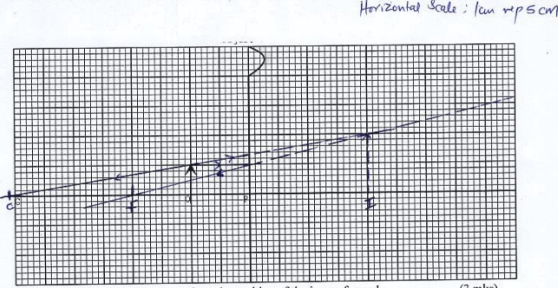
- State two advantages of an alkaline battery over lead acid battery. (2mks)
- Requires less maintenance
- Large current can be drawn from them for a longer time
- Highly portable.
- An electric bulb with filament of resistance 480Ω is connected to 120 V mains supply. Determine the energy dissipated in 7 min (3 mks)
E = v2t
R
= 1202 × 7 × 60
480
= 6048000
480
= 12600Joules - The figure 6 below shows a cross section of a dry cell.
Figure 6
- Name the part labeled A (1 mark)
- Ammonium chloride Jelly/paste
- State the use of manganese (iv) oxide in the cell (1 mark)
- It acts as the depolariser.
- Name the part labeled A (1 mark)
SECTION II (55 marks)
-
-
- In large currents, large resistors in parallel are preferred to low resistors in series. Explain (1mk)
- Parallel resistors allow diversion of curved hence they do not overheat.
- State one condition under which ohm’s law is obeyed in a metal conductor. (1mk)
- If the temperature is kept constant
- Physical conditions are constant
- A circuit constituting a battery, a metal wire, an ammeter and a switch connected in a series. The switch is closed and the ammeter reading noted. The metal wire is now heated. State observation on the ammeter reading and give a reason for your answer. (2mks)
- The reading reduces
- Resistance of conductors increases with increase in temperature hence current flowing reduces.
- In large currents, large resistors in parallel are preferred to low resistors in series. Explain (1mk)
- In the figure 7 below, the voltmeter reads 2.4V when the switch is open. When the switch is closed, the voltmeter reads 2.1V and the ammeter reads 0.15A.
Determine the- E.m.f of the cell (1mk)
- 2.4 ( when circuit is open)
- Internal resistance of the cell (3mks)
E = V + Ir
2.4 = 2.1 + (0.15 × r)
2.4 = 2.1 = 0.15r
2.4 − 2.1 = 0.15r
0.3 = 0.15r
0.15 0.15
r = 2Ω - Resistance of the bulb (2mks)
V = IR
2.1 = 0.15 × R
R = 2.1
0.15
= 14Ω
- E.m.f of the cell (1mk)
- Explain why a voltmeter of high resistance is more accurate in measuring potential difference that one of low resistance (1mk)
- HIgh resistance voltimeters takes less current hence can even be used when current is low.
- Distinguish between electrical resistance and a resistor (1mk)
- Electrical resistance is the opposition offered by a conductor to the flow of current while resistor are conductors specially designed to offer a particular resistance to the flow of electric current.
-
-
-
- Define the term wavelength of a longitudinal wave (1mk)
- This is the distance between two successive compressions or rarefactions
- The figure 8 below shows a displacement distance for a certain wave motion.
Determine- The amplitude of the wave (1mk)
- 10cm
- The wavelength of the wave (1mk)
- 20cm
- Given that the frequency of the wave is 40Hz, determine the:
- Periodic time (T) (1mk)
T = 1/f
= 1/40
I - 0.025sec - Speed of the wave (3mks)
V = f λ
λ = 20/100 = 0.2m
V = 40 × 0.2
V = 8 m/s
- Periodic time (T) (1mk)
- The amplitude of the wave (1mk)
- Define the term wavelength of a longitudinal wave (1mk)
- Figure 9 below shows light rays from two coherent sources S1 and S2 falling on screen. Dark and bright fringes are observed between A and B
- State the function of S1 and S2 (1mk)
- They are for defraction of source light so as to produce two equal waves.
- State how
- Bright fringes are formed (1mk)
- Through constructive interference between the two waves
- Dark fringes are formed (1mk)
- Through destructive interference
- Bright fringes are formed (1mk)
- State the function of S1 and S2 (1mk)
- Figure10 below shows plane water waves incident on a plane reflector placed at an angle to the path of the waves.
Complete the diagram to show the reflected waves (2mks)
-
-
- State Snell’s law (1mk)
- The law states that for a given pair of medium, the ratio of the sine of the angle of incidence to the sine of angle of refraction is a constant.
- The Figure 11 below shows a ray of light travelling incident on air-kerosene interface.
- If the speed of light in kerosene is 2.08 x108 m/s, find the refractive of kerosene. (speed of light in air = 3.0 x108) (2mks)
SL = velocity in Air
velocity of light kerosene
= 3.0 x108
2.08 x108
= 1.442
ank = 1.442 - Determine the angle of refraction in water (anw = 4/3) (4mks)
sin i = 1.442
sin r
sin 60 = 1.442
sin x
sin 60 = sin x
1.442
sin x = 0.6640
x = 36.91°
kna.anw =
500 × 4 = 2000
721 3 2163
knw = 0.9246
sin i = 0.9246
sin r
sin 36.91 = 0.9246
sin r
sin 36.91 = sin r
0.9246
sin r = 0.6495
r = 40.50° - On the same diagram sketch the path of light as it traverses through the media showing the angle of refraction in air (3mks)
sin i = ¾
sin r
sin 40.50 = 0.75
sin r
sin 40.50 = sin r
0.75
sin r = 0.8659
r = 60°
- If the speed of light in kerosene is 2.08 x108 m/s, find the refractive of kerosene. (speed of light in air = 3.0 x108) (2mks)
- State Snell’s law (1mk)
-
- State Ohm’s law. (1 mark)
- The law states that the current flowing through a conductor is directly propotional to the potential difference across the conductor provided the temperature is kept constant.
- You are provided with the following apparatus:
- Connecting wires
- An ammeter
- Fixed resistor
- A voltmeter
- A variable resistor
- Switch
- 2 dry cells in a cell holder
- In the spaces below, draw the circuit that can be used using the apparatus above to verify Ohm’s Law. (3 marks)
- Briefly explain how you can obtain the results to verify Ohm’s law. (4mrk)
- Close the switch and record the reading on the voltimeter and that of Ammeter on a table.
- Adjust the variable resistor to have a new reading of the current in Ammeter and p.d at the voltimeter
- Repeat this procedure and tabulate the data on a table
- Plot a graph of p.d (V) against curret (A). The graph is a straight line through the origin proving the direct propotions.
- The gradient of the graph (ΔV/ΔA) gives the resistance of fixed resistor.
- In the spaces below, draw the circuit that can be used using the apparatus above to verify Ohm’s Law. (3 marks)
- Study the circuit diagram below and answer the questions that follow.
- Calculate the effective resistance of the circuit. (3mrks)
Parallel arrangement:
1 = 1 + 1 + 1
RT R1 R2 R2
= 1/6 + 1/4 + 1/3
= 0.1667 + 0.25 + 0.3333
1 = 0.75
RT
RT = 1.333
Series
RT = R1 + R2
= 1.333 + 4
Effective resistance = 5.333Ω - Find the voltmeter reading. (2mrks)
V = IR
4.5 = I × 5.333
I = 4.5
5.333
I = 0.8438A
Current through 4Ω is also 0.8438A
Vfe = IR
0.8438 × 4
= 3.3752
- Calculate the effective resistance of the circuit. (3mrks)
- State Ohm’s law. (1 mark)
-
- Describe two factors that affects the strength of an electromagnet (2 mks)
- Amount of current - The high the amount of current, the stronger
- Shape of core - u-shaped are stronger
- Number of turn - The more the stronger
- State Fleming’s left hand rule (1 mks)
- If the left hand is held with the thumb, the first and the second fingers mutually at right angles so that the first finger points in the direction of the magnetic field and the second finger in the direction of the current then the thumb points in the direction of motion of the force.
- Show the magnetic field pattern around this set up (2 mks)
- Describe two factors that affects the strength of an electromagnet (2 mks)
-
- Define the term capacitance (1 mks)
- This is the measure of the amount of charge a capacitor can store
- Charge stored per unit voltage.
- Determine the
- Charge in 3 µF (2 mks)
Q = CV
= 3 × 10−6 × 9
= 2.7 × 10−5C - P.d across 6µF (2 mks)
- 9V
- Charge in 3 µF (2 mks)
- Define the term capacitance (1 mks)
Join our whatsapp group for latest updates
Tap Here to Download for 50/-
Get on WhatsApp for 50/-
Download Physics Paper 2 Questions and Answers - Form 4 Term 1 Opener Exams 2023.
Tap Here to Download for 50/-
Get on WhatsApp for 50/-
Why download?
- ✔ To read offline at any time.
- ✔ To Print at your convenience
- ✔ Share Easily with Friends / Students

